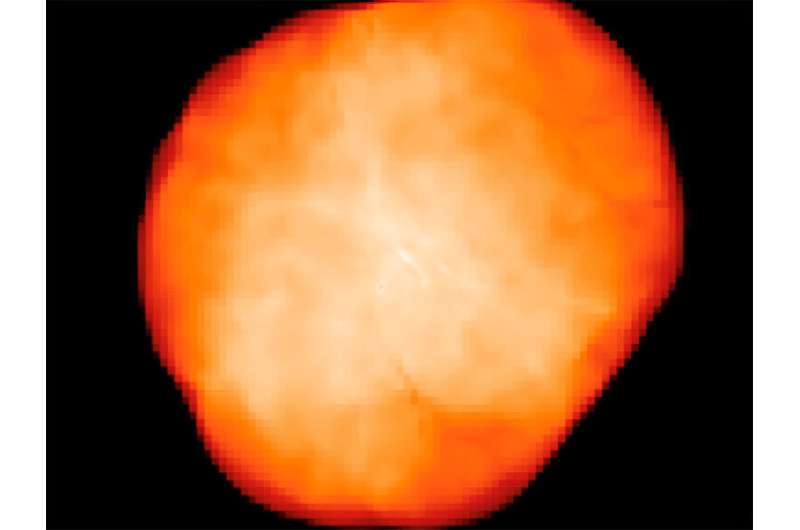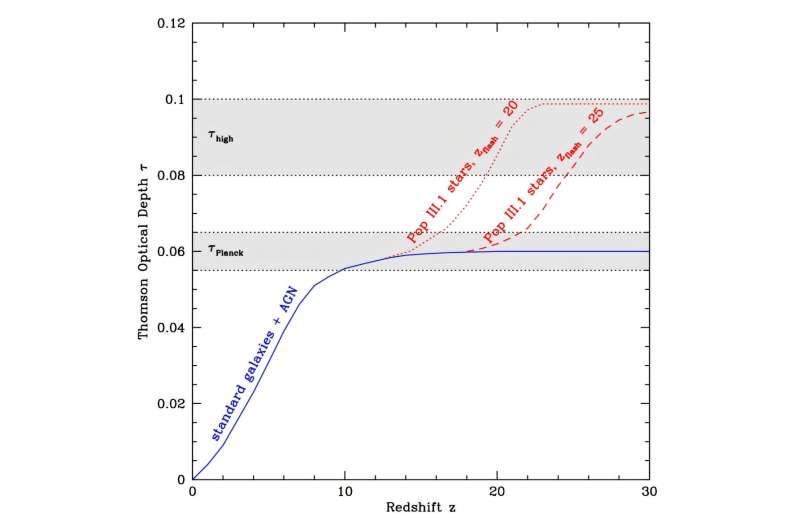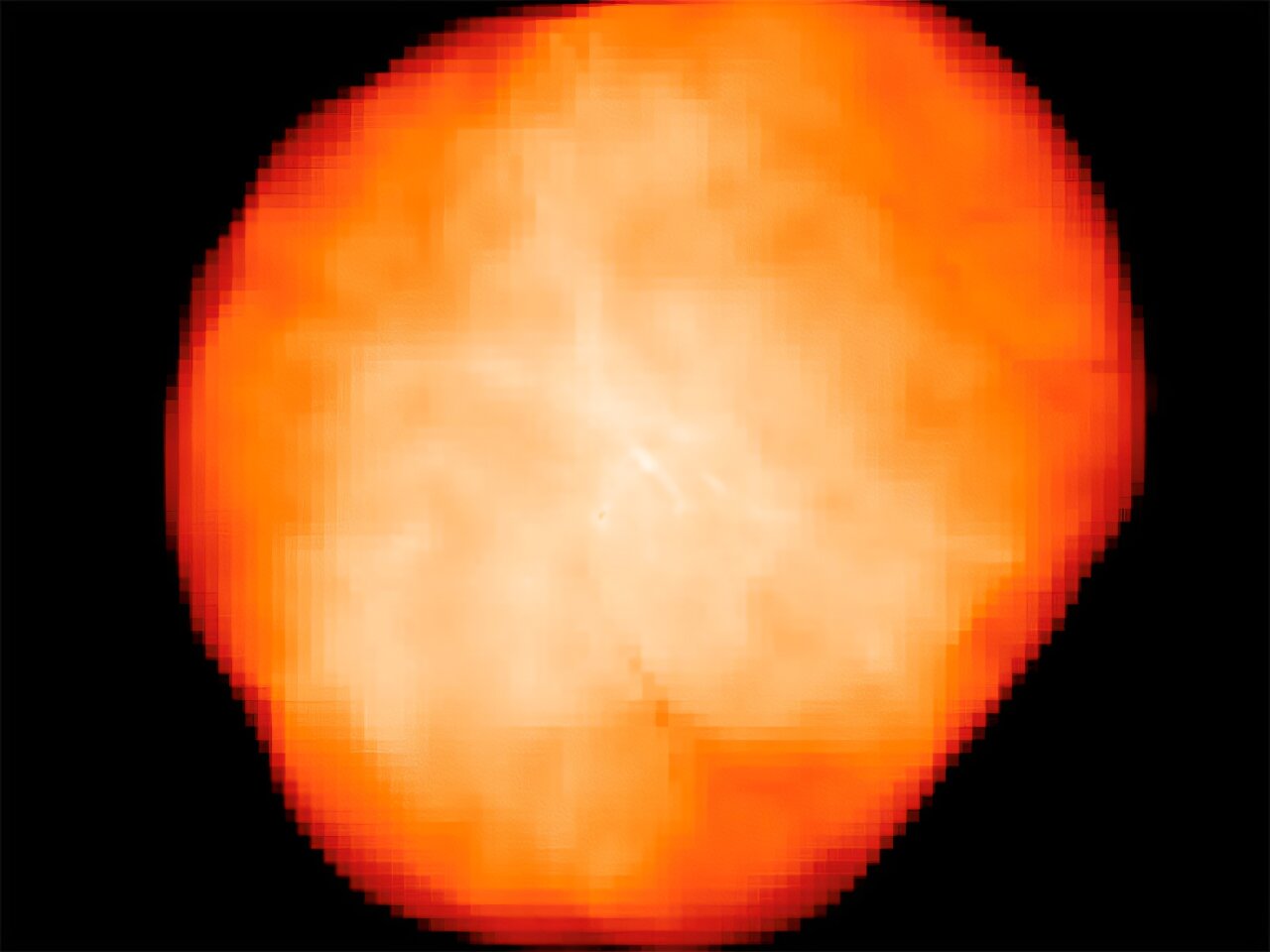
Computer simulation of the ionized bubble around a Population III.1 supermassive star, progenitor of a supermassive black hole, that forms in the early universe. High energy photons from the star ionize the surrounding hydrogen gas far out into the pristine intergalactic medium, eventually engulfing a region that is millions of light years in size. The Pop III.1 theory proposes that all supermassive black holes formed in this way leading to flash ionization of all of space and ending the so-called “dark ages” of the universe. Credit: M. Sanati (Chalmers Univ. & Oxford Univ.), J. Tan (U. Virginia & Chalmers Univ.)
A new theoretical study by University of Virginia astrophysicist Jonathan Tan, a research professor with the College and Graduate School of Arts & Sciences’ Department of Astronomy, proposes a comprehensive framework for the birth of supermassive black holes.
These mysterious behemoths lurk in the centers of most large galaxies, including our own Milky Way, and are typically millions or even billions of times more massive than the sun. Their formation has been much debated, especially as the James Webb Space Telescope (JWST) has been finding many such black holes that exist far away and that have existed as far back in time as the dawn of the universe.
Tan’s theory, known as “Pop III.1,” proposes that all supermassive black holes form as the remnants of the very first, so-called “Population III.1” stars, the very first stars in the universe which grew to enormous sizes under the influence of energy from a process known as dark matter annihilation, and the theory has predicted many of the JWST’s recent findings.
In his paper, “Flash Ionization of the Early Universe by Pop III.1 Supermassive Stars,” published on the arXiv preprint server and forthcoming in The Astrophysical Journal Letters, Tan, who is also a professor in the Department of Space, Earth and Environment at Chalmers University of Technology, Gothenburg, Sweden, outlines another prediction of the theory that could shed new light on the origins of the universe.
“Our model requires that the supermassive star progenitors of the black holes rapidly ionized the hydrogen gas in the universe, announcing their birth with bright flashes that filled all of space,” Tan said.
“Intriguingly, this extra phase of ionization, occurring much earlier than that powered by normal galaxies, may help resolve some recent conundrums and tensions that have arisen in cosmology, including the ‘Hubble Tension,’ ‘Dynamic Dark Energy’ and preference for ‘Negative Neutrino Masses,’ all of which challenge the standard model of the universe.
“It’s a connection we didn’t anticipate when developing the Pop III.1 model, but it may prove profoundly important.”

Thomson optical depth to electron scattering, τ, integrated out to redshift, z. Credit: arXiv (2025). DOI: 10.48550/arxiv.2506.18490
The study has been praised by Richard Ellis, one of the world’s leading observational cosmologists and a professor of astrophysics at University College London who has spent decades studying the formation of the earliest galaxies and the first light in the universe.
“Professor Tan has developed an elegant model that could explain a two-stage process of stellar birth and ionization in the early universe,” said Ellis. “It’s possible the very first stars formed in a brief, brilliant flash, then vanished—meaning what we now see with the James Webb Telescope may be just the second wave. The universe, it seems, still holds surprises.”
More information:
Jonathan C. Tan, Flash Ionization of the Early Universe by Pop III.1 Supermassive Stars, arXiv (2025). DOI: 10.48550/arxiv.2506.18490
Provided by
University of Virginia College and Graduate School of Arts & Sciences
Citation:
‘Pop III.1’ model explains origins of black holes and early cosmic ionization (2025, August 12)
retrieved 13 August 2025
from https://phys.org/news/2025-08-iii1-black-holes-early-cosmic.html
This document is subject to copyright. Apart from any fair dealing for the purpose of private study or research, no
part may be reproduced without the written permission. The content is provided for information purposes only.
